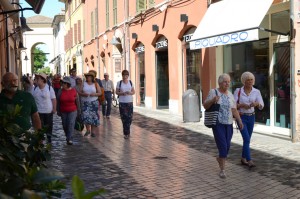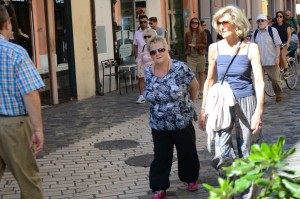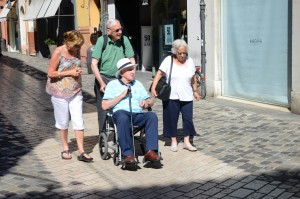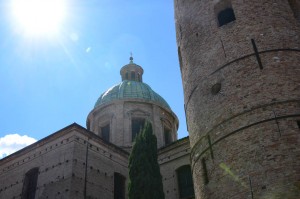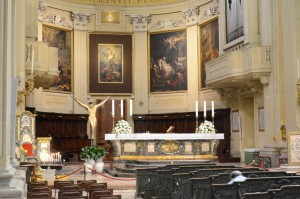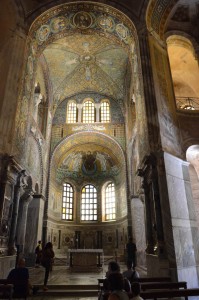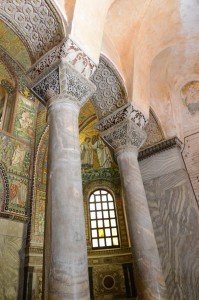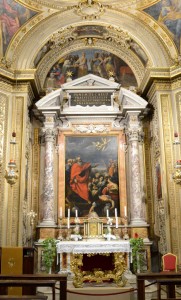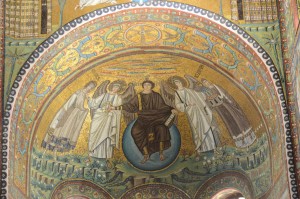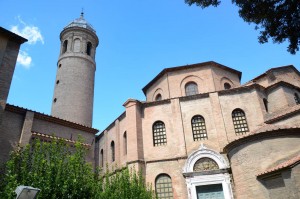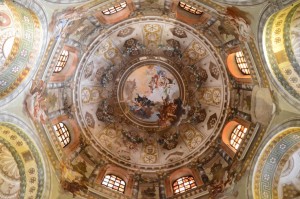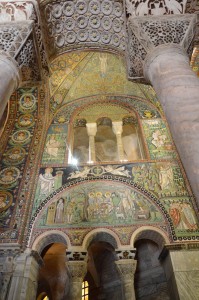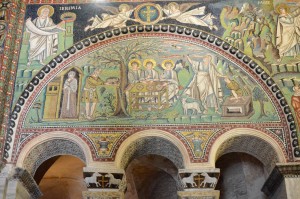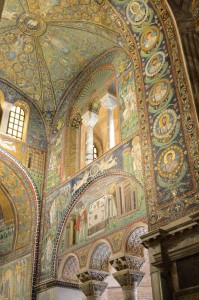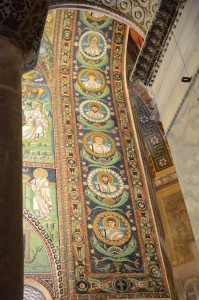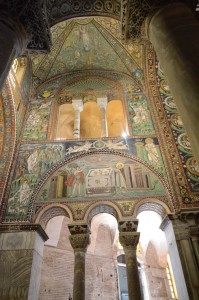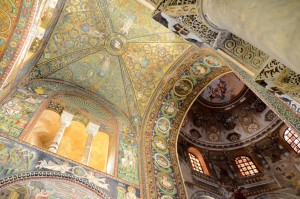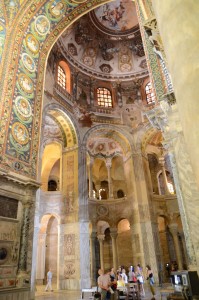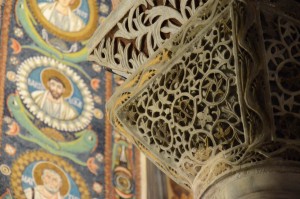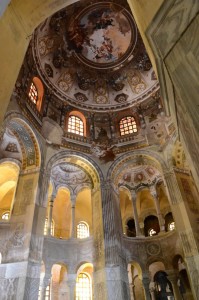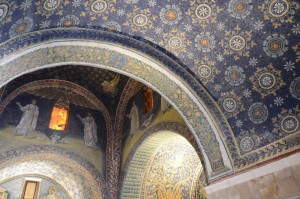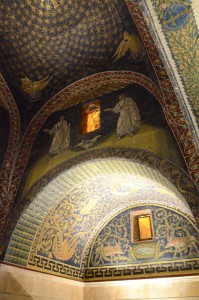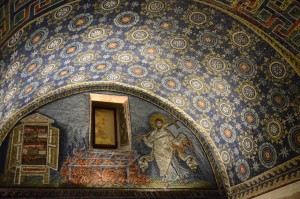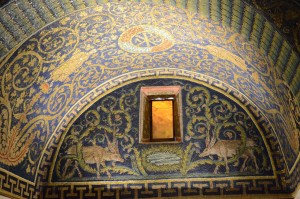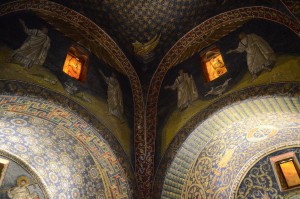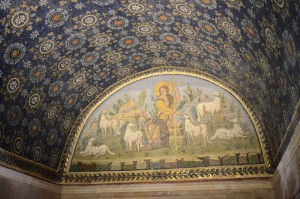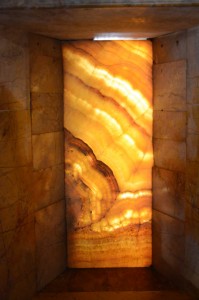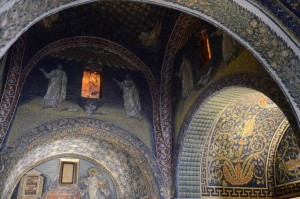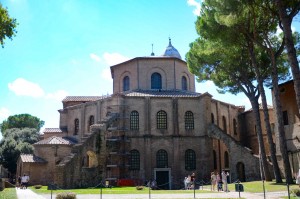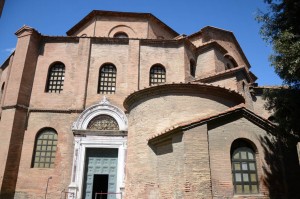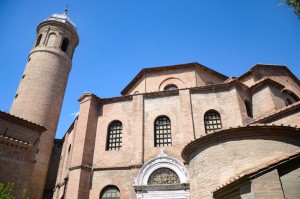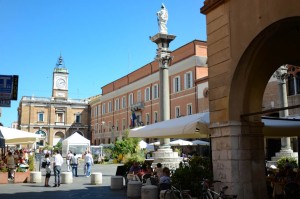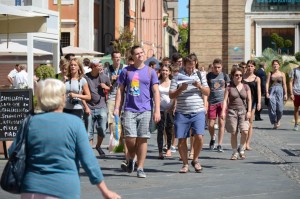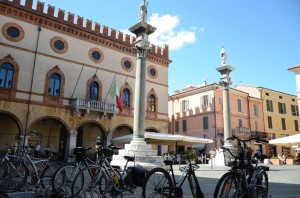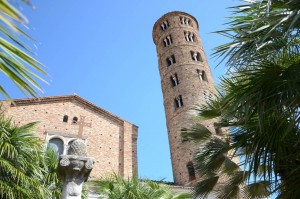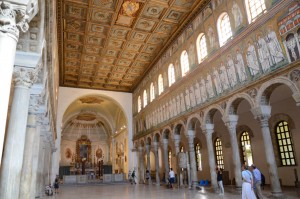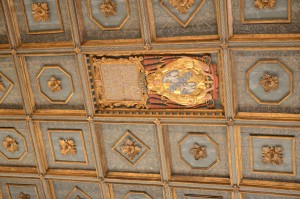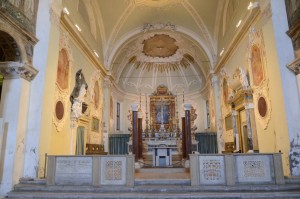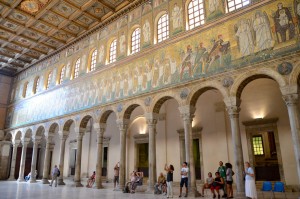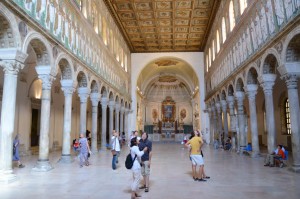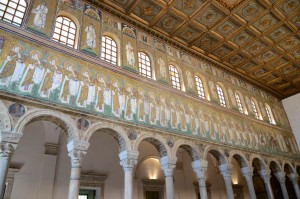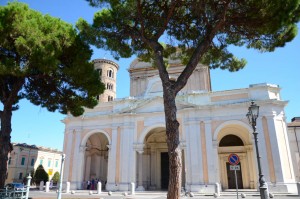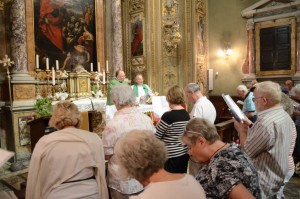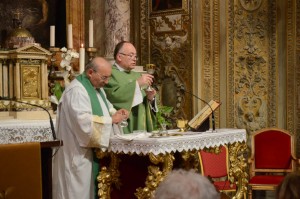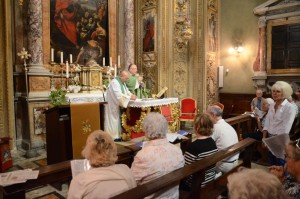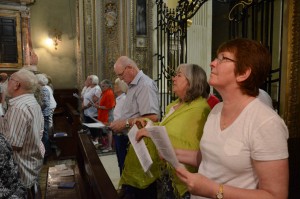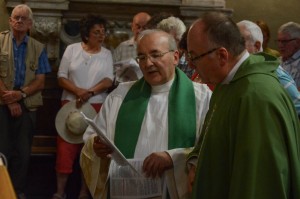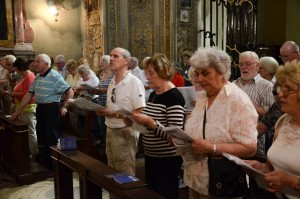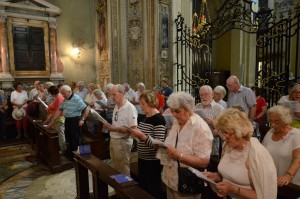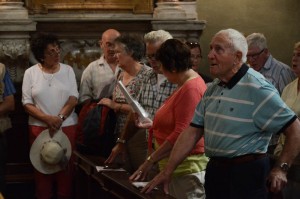Ravenna looks much like any other Italian city at first glance, with old streets, fine shops and peaceful squares, but the Byzantine domes of its churches still evoke its Eastern heritage. Ravenna’s early Christian churches and mosaics have been collectively designated a World Heritage Site.
Ancient Mosaics
St Apollinaire
San Apollinaire Nuovo was built by the Ostrogoth King Theodoric as a Palatine chapel in the first quarter of the 6th century. It was later reconsecrated in 561, under the rule of the Byzantine emperor Justinian I. The basilica was renamed in 856, when relics of Saint Apollinaris were transferred from the Basilica of Sant’Apollinare in Classe, on the outskirts of Ravenna.
The church underwent several modernisations, beginning in the 6th century, when some of the mosaics were altered. Fragments of arms and hands of figures originally depicting members of Theodoric’s court, can still be found on images of columns within the mosaics.
The walls have several tiers of mosaics, but the ones most noted by visitors are the rows of female virgin saints and male martyrs in rows on either side of the nave above the columns. On the left side of the nave, is a row of femaie virgin saints holding crowns, and led by the three Magi bearing gifts for the Virgin and Child near the apse. On the right side of the nave, can be found male martyrs carrying crowns, proceeding toward the enthroned Christ surrounded by angels. All the figures are shown in the formalized Byzantine style. The present apse (choir area) is a reconstruction after being damaged during World War I.
Duomo of Ravenna
The Baroque cathedral of Ravenna was built in the 18th century by the architect Giovanni Francesco Buonamici. Its interior contains lavish decorations and frescoes typical of the period. Although beautiful, its construction ensured that the ancient Ravenna cathedral, known as la Basilica Ursiana, was lost forever. Built in the late 4th century by the Bishop of Ravenna, Orso (Ursus), la Basilica Ursiana boasted mosaics, five naves and 56 columns, and was probably as magnificent as any Paleochristian church in Ravenna. Sadly, it had reached a crumbling state and was destroyed in 1733 to clear the site for a new cathedral.
The Oratory of S. Andrea or Archiepiscopal Chapel is the only existing archiepiscopal chapel of the early christian era that has been preserved intact to the present day. It was erected by Bishop Peter II (494-519) during the reign of Theodoric as a private oratory for catholic bishops, at the time when Arianism was the main religion of the court. Originally dedicated to Christ, the chapel was then renamed and dedicated to Saint Andrew, whose relics were transported from Costantinople to Ravenna around the mid-6th century AD.
MORE PHOTOS – San Giorgio Maggiore, Ravenna, Verona, Venice, Treviso, Padua, Lake Garda and Montegrotto.

